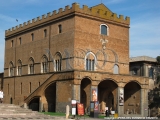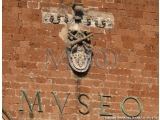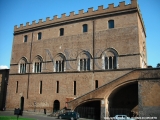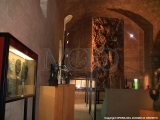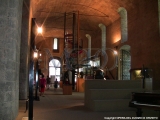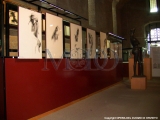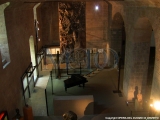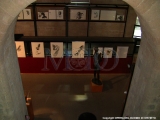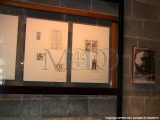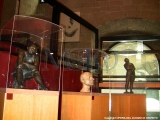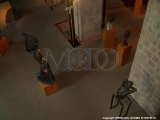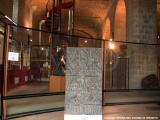Siete qui:
- Home
- The MODO Museum
- The Museums Venues
- Palazzo Soliano - Museo Emilio Greco
Palazzo Soliano - Museo Emilio Greco
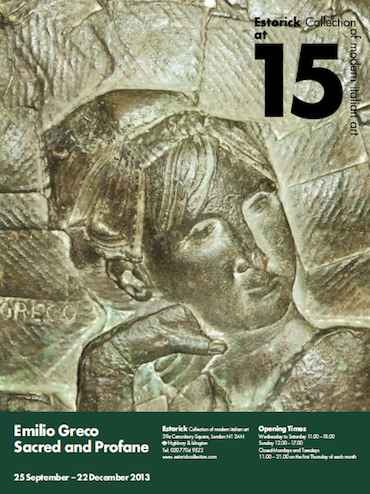 Emilio Greco 1913-2013. Orvieto and MODO Museum in the celebrating exhibitions in London and Rome
Emilio Greco 1913-2013. Orvieto and MODO Museum in the celebrating exhibitions in London and Rome
Some beautiful masterpieces of the artist from Orvieto Modo Museum in the two exhibitions. In Rome from 15 Octobre 2013 to 12 January 2014. In London from 25 September to 22 December 2013.
Emilio Greco 1913-2013 CENTOANNI: "Sacred Work. Musei Vaticani and Orvieto bronze sculptures"
In the year of the birth centenary Orvieto honors with a special exhibition Emilio Greco, who sculpted the great bronze doors of the Cathedral between 1962 and 1964. The artist also donated to the city the works housed at the Museo Emilio Greco. From 22 June to 3 November 2013.
Located on Piazza del Duomo in Orvieto, next to and to the right of the Cathedral, Palazzo Soliano is the largest and most imposing of the papal residences in Orvieto. It was built for Pope Boniface VIII Caetani (1294-1303).
Formerly the historical premises of the Museo dell'Opera del Duomo, in September 2008 Palazzo Soliano became the linchpin for the exhibition itinerary of the MODO with a new reception space for visitors, ticket office and educational services.
The Museo Emilio Greco on the ground floor houses the works donated by the artist to the city of Orvieto thanks to the strong ties engendered by his commission in 1964 to create the bronze doors for the Cathedral. These doors, overlooking Piazza del Duomo, now serve as introduction to this great architectural masterpiece.
The ground floor exhibits of Palazzo Soliano, ranging in date from 1947 to 1990, mark the most significant stages in the artist's career: from the Wrestler, exhibited in London for the 1948 Olympics, to the famous plaster cast of the Monument to Pope John XXIII (1965-67).
As point of departure for the MODO exhibition itinerary the modern twentieth-century Museo Emilio Greco represents an initial contact with an artistic idiom that is still connected to modernity, the period extending roughly from 1860 to the mid-twentieth century. It is a place in which to become acquainted with the world of contemporary art before moving on into the depths of the history and art in the other premises. It is also a way of highlighting the bond that connects Emilio Greco, leading figure in post World War II Italian culture, to the art and story of the cathedral of Orvieto, a vital entity in fostering the creation and diffusion of art up to our times.
On August 11, 1970, the great bronze doors created between 1962 and 1964 by the Sicilian sculptor were finally hung in the majestic medieval portals of the Cathedral. The museum itinerary in the Papal Palaces begins its journey back in time to the outstanding works of art in the collections of the Opera del Duomo with this extraordinary testimony of the complex process of the renewal of sacred art in the latter half of the twentieth century. The Museo Emilio Greco has by now come to be accepted as a natural addition to Piazza del Duomo. As a meeting place and a venue for musical and literary encounters, it focuses on the cultural context of the cathedral and its museums. It is the source of new reflections on the theme of sacred art today, often deferred in favor of the needs of conservation.
The new exhibition itinerary of the Museo dell'Opera, which now included the Museo Emilio Greco, was inaugurated on September 26, 2008. On this occasion Antonella Greco, the sculptor's daughter, deposited on loan to the Museum a bronze study (maquette) for the doors of the Cathedral, made by her father in 1962. Now located at the entrance to the Museo Emilio Greco, the Study (bronze, 141 x 75 x 34, weighing around 100 kg), previously in the Emilio Greco Archives in Rome, is once more back with the drawings for the Orvieto doors previously donated by the artist.



